U.S. Department of Transportation
Federal Highway Administration
1200 New Jersey Avenue, SE
Washington, DC 20590
202-366-4000
FHWA Resource Center
Office of Innovation Implementation
Volume 3, Issue 3
July 2007
Letter from the Editor
Dear Environmental Colleague,
We hope this newsletter finds you enjoying your summer. We hope you find time to grab a glass of lemon-aide and take time to read this month’s articles on the Supreme Court’s take on climate change (by guest author Jeff Houk from the FHWA Resource Center’s Air Quality Team), our National Emblem, the Archeology task force, and more.
As always, if you have comments about a story or story ideas, please let us know.
Sincerely, Don Cote
Environment Technical Service Team (TST) Leader &
Editor–in-Chief
Phone: (720) 963-3210
E-mail: Don.Cote@dot.gov
In This Issue:
• Supreme Court On Climate Change…p. 1
• New PEL Web site…p. 3
• Advisory Council’s Archeology Taskforce …p. 5
• Bald Eagles to Remain Protected...p. 8
• Guidance Issued on Clean Water Act Jurisdiction…p 10.
• STAQS 2007 Announcement…p. 11
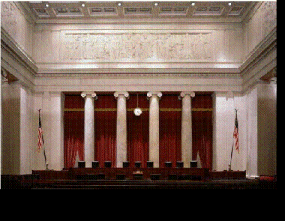
Caption: Photo of the interior of the empty Supreme Court room..Photograph by Franz Jantzen, Collection of the Supreme Court of the United States. Used with permission.
The Supreme Court Takes on Climate Change
By Jeff Houk, Air Quality Specialist, FHWA Resource Center
On April 2nd, 2007, the Supreme Court issued its decision in Massachusetts et al v. Environmental Protection Agency et al. The case concerned the Environmental Protection Agency’s (EPA’s) ability to regulate greenhouse gas emissions, the pollutants behind global climate change.
The case had its origins eight years ago, when several private organizations petitioned EPA to regulate greenhouse gas emissions from motor vehicles under the Section 202 of the Clean Air Act. Section 202(a)(1) of the Act states that the EPA Administrator must issue emissions standards for motor vehicles covering emissions of any air pollutant “which in his judgment cause, or contribute to, air pollution which may reasonably be anticipated to endanger public health or welfare.” EPA denied this petition in 2003, arguing that it did not have authority to regulate greenhouse gas emissions under the Clean Air Act, and that even if it did, it would be unwise to do so, because of uncertainty surrounding climate issues and the potential for conflicts with other Administration climate initiatives. The petitioners, now joined by several state and local governments, appealed this decision to the Court of Appeals, and, following an unfavorable decision, to the Supreme Court.
The Court’s decision is in three parts. First, the issue of whether plaintiffs had standing to sue was addressed. In the case of Massachusetts, the court concluded that the documented impacts of sea level rise on its coastline gave the state standing to sue.
Second, the Court addressed EPA’s contention that it lacked authority to regulate carbon dioxide (CO2) emissions from motor vehicles because CO2 is not an “air pollutant” as defined by the Clean Air Act. The Court found otherwise, noting that the Act “embraces all airborne compounds of whatever stripe,” and emphasizing that “the statute is unambiguous.” The Court addressed EPA’s argument that controlling automotive CO2 emissions would require it to regulate fuel economy, a responsibility reserved for USDOT, by stating that the fact that USDOT sets mileage standards “in no way licenses EPA to shirk its environmental responsibilities.”
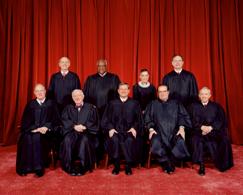
Caption: A photo of the Justices of the Supreme Court. Photograph by Steve Petteway, Collection of the Supreme Court of the United States
Finally, the Court addressed EPA’s argument that even if it had authority to regulate greenhouse gas emissions, it would be unwise to do so at this time. The Court concluded that EPA’s position “rests on reasoning divorced from the statutory text.” Given the Act’s requirement that EPA form a “judgment” as to whether CO2 would cause or contribute to air pollution which would endanger public health or welfare, the Court found that “EPA has refused to comply with this clear statutory command. Instead, it has offered a laundry list of reasons not to regulate.” The Court went on to say that these reasons “have nothing to do with whether greenhouse gas emissions contribute to climate change”
With the Supreme Court’s decision, the case has been sent back to the Court of Appeals, who in turn will remand the decision on the original petition to EPA for reconsideration. In the meantime, the case is already having impacts. At least two related court cases that had been placed on hold pending the Supreme Court decision are now proceeding, and EPA has opened a public comment period on California’s request to start regulating CO2 emissions on new motor vehicles sold in that state (California has special authority under the Clean Air Act to set its own motor vehicle emissions standards). In testimony before the Senate on April 24, 2007, EPA Administrator Stephen Johnson noted that the decision will likely have impacts beyond regulation of motor vehicle emissions, indicating that this is “one of the most important environmental law decisions in years.”
There are no direct impacts on FHWA or our state partners from this case, but it is one of many recent developments that increase the visibility of climate change issues. Thus, it may help generate increased interest in analysis of greenhouse gas emissions as part of the planning process and/or in NEPA project development. Another pending case, in the U.S. District Court for Northern California, may have a more direct impact on implementation of NEPA. In this case, in partially rejecting a motion for summary judgment on behalf of the defendants (the Overseas Private Investment Corporation and the Export-Import Bank), the Court rejected the argument that the domestic impacts of climate change (that the defendants’ actions might contribute to) are too remote and speculative to be considered in NEPA. FHWA will be following this case.
FHWA is actively involved in climate change issues through its involvement in the DOT Center for Climate Change and Environmental Forecasting. The Center includes representation from all DOT modes, and works to 1) reduce the impact of transportation on national greenhouse gas emissions, and 2) assess and minimize the impacts of climate change on transportation infrastructure. Two recent Center projects include publication of the Transportation Emissions Guidebook, an interactive tool summarizing the benefits of many transportation-related greenhouse gas mitigation strategies, and the draft Gulf Coast study, a multi-year research effort between USDOT and the US Geologic Survey to assess the impacts of climate change on transportation facilities along the Gulf Coast. For more information, visit the Center’s web site (climate.volpe.dot.gov).
The author, Jeff Houk, is an FHWA Resource Center Air Quality Specialist. He can be contacted at jeff.houk@fhwa.dot.gov.
FHWA Launches New Planning and Environment Linkages Website
By Mary Ann Rondinella
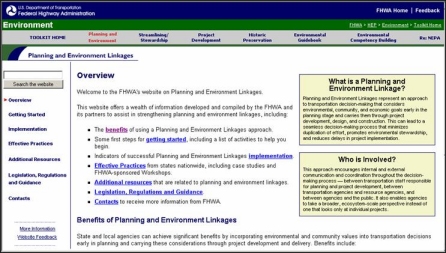
Visit the new website at http://www.environment.fhwa.dot.gov/integ/index.asp to find out: how the linkages between planning and environment can enable early consideration of the environment during transportation planning; how transportation planning and resource conservation planning can work together more effectively; and how transportation planning can improve and streamline project-level decision making.
We’ve heard about linking transportation planning and the NEPA process for some time now. We’ve also heard about integrated planning, that is, how transportation planning and conservation planning can work together to improve efficiency and optimize benefits for the environment. And in recent years, we’ve heard about Eco-logical and Green Infrastructure, just two of the approaches that enable transportation decision-making to include ecosystem-level considerations.
But how does it all fit together? What do these initiatives have in common? How do they differ? Perhaps, most importantly, how do we get started?
To answer these and many other questions, FHWA has launched a new website, the Planning and Environment Linkages (PEL) website.
It All Begins With Planning
Consideration of the environment during transportation planning isn’t new. For many years, environment was one of several planning factors for metropolitan and statewide transportation planning. The transportation conformity requirements of the Clean Air Act necessitate regional air quality analyses in non-attainment and maintenance areas.
More recently, the concept of integrated planning has gained attention. Integrated planning is an approach where transportation, land use and resource conservation planning are done cooperatively. The goal is to coordinate the different planning efforts so they can complement each other.
Recognizing that transportation planning builds on each community’s assessment of its transportation and economic needs and goals, carrying planning-level decisions into project development and the National Environmental Policy Act (NEPA) process has also received increased attention.
SAFETEA-LU’s New Planning Requirements
The new website contains useful information about the Safe, Accountable, Flexible, Efficient Transportation Equity Act – A Legacy for User’s (SAFETEA-LU). SAFETEA-LU Section 6001 contains important new requirements for metropolitan and state-wide transportation planning. The new requirements are contained in the new planning regulations issued in February 2007. The new requirements include:
• Consultations with resource agencies, such as those responsible for land-use management, natural resources, environmental protection, conservation and historic preservation, which shall involve, as appropriate, comparisons of resource maps and inventories.
• Discussion of potential environmental mitigation activities.
• Participation plans that identify a process for stakeholder involvement.
• Visualization of proposed transportation strategies where practicable.
Appendix A of the new regulation, which is also available at the website, includes guidance on linking of the transportation planning and NEPA processes.
Additional Resources to Explore
The website contains a table listing several approaches such as context sensitive solutions, integrated approaches, Eco-logical and more. From the website, visitors can click on links to view or download additional information.
The website also describes workshops and other activities to launch implementation of an integrated approach.
FHWA has also added a new Planning and Environment Linkage discussion topic to the Re:NEPA forum.
For more information, contact Michael Culp at Michael.Culp@dot.gov or Danyell Diggs at Danyell.Diggs@dot.gov.
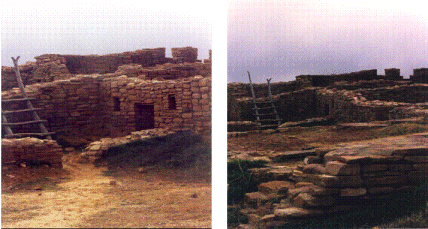
THE ADVISORY COUNCIL’S ARCHEOLOGY TASKFORCE ADDRESSES PRIORITY ISSUES
By Stephanie Stoermer
The Advisory Council on Historic Preservation’s (ACHP) Archeology Task Force was established by Chairman John Nau III to identify issues that should receive priority consideration and action by the ACHP. Members of the Task Force include:
• Dr. Julia King, chair and Expert member of the ACHP;
• Gerald Peter Jemison, Native American member of the ACHP;
• Secretary of Agriculture;
• Secretary of Defense;
• Secretary of the Interior;
• Secretary of Transportation; and
• National Conference of State Historic Preservation Officers (NCSHPO)
Observers include the ACHP’s Native American Advisory Group and the National Association of Tribal Historic Preservation Officers (NATHPO). Three resource persons recommended by the Society for American Archaeology (SAA), the Society for Historical Archaeology (SHA), the American Cultural Resources Association (ACRA), and the Register of Professional Archaeologists (RPA); and the American Association of Museums (AAM) provide technical assistance to the Taskforce.
In order to identify priority issues, the Archeology Task Force reached out to all Federally recognized Indian tribes, Native Hawaiian Organizations (NHOs), professional archeological and scientific organizations, Federal Preservation Officers (FPOs), State Historic Preservation Officers (SHPOs), and Tribal Historic Preservation Officers (THPOs). Three key issues identified as a result of the Task Force outreach have been the focus of the Task Force’s efforts since 2004:
1. Revisiting the ACHP’s 1988 “Policy Statement Regarding Treatment of Human Remains and Grave Goods"While all three of these priority issues have a nexus with transportation, only two will be considered with in the context of this article because they relate more directly to transportation decision-making and project development.
2. Developing new guidance for archeology conducted under Section 106
3. Identifying archeology and heritage tourism initiatives
Over a two year period, the Task Force made available three versions of the evolving policy for public review and comment. Eight regional consultation meetings with Indian tribes and two with Native Hawaiian organizations were conducted, and there was also considerable outreach to various professional organizations with an identified interest in the policy.
On February 23, 2007, the ACHP adopted—by unanimous vote-- the new “Policy Statement Regarding Treatment of Burial Sites, Human Remains, and Funerary Objects.” The new policy emphasizes consultation, does not prescribe or proscribe a course of action, does not affect NAGPRA or any other statute,
encourages the avoidance of burial sites if at all possible, and seeks to have decisions made on a case-by-case basis.
The new policy went into effect upon adoption by the ACHP and replaces the ACHP’s 1988 policy. While it applies to all burial sites that are part of a historic property listed on or eligible for the National Register of Historic Places (NRHP) and are within the Area of Proposed Effect (APE) of a Section 106 project, the policy explicitly recognizes the sovereign status of Federally recognized Indian tribes as well as the legal requirement for government-to-government consultation with those tribes. The complete text of the new ACHP policy is available at: http://www.achp.gov/docs/hrpolicy0207.pdf
The second key issue being carried forward by the Task Force is the development of much-needed guidance to assist Federal agencies, State and Tribal Historic Preservation Officers, Indian tribes, Native Hawaiian organizations, and other stakeholders in carrying out archaeology under Section 106. Seven topics were identified for further guidance development. These topics were later prioritized at the request of Dr. King, the Task Force Chair.
Guidance for the following four topics needed to be developed concurrently because the topics share related issues:
As the guidance was completed, these topics were blended together to reflect the steps in the Section 106 process. Work on this phase of guidance development began in 2005 and the guidance documents recently became available at www.achp.gov/archguide.1. Making Section 106 consultation more effective;
2. What constitutes a “Reasonable and Good-Faith Effort” to identify historic properties;
3. Applying the National Register criteria to archaeological properties in the Section 106 process; and
4. Opportunities for creative approaches to resolving adverse effects to archeological sites.
The Task Force is currently involved in developing the guidance documents for the remaining three topical areas:
1. Federal agency responsibilities on private landsThe ACHP’s Archeology Task Force is noteworthy because of the level of effort it has devoted to reaching out to the wide range of stakeholders and to carefully considering those stakeholders’ views when revising the ACHP’s new “Policy Statement Regarding Treatment of Burial Sites, Human Remains, and Funerary Objects. The new policy, as well as the forthcoming guidance related to archeology conducted under Section 106, are likely promote better informed and more culturally sensitive decisions during the development of transportation projects, as well as during the Section 106 process.
2. Curating collections and permanent recordation of archaeological properties
3. Ensuring quality work and completion of reporting requirements in Section 106 archaeology
For more information on the ACHP and the Archeology Task Force, please visit: http://www.achp.gov/
ICOET brings Environment Team Face to Face with Customers…and Itself
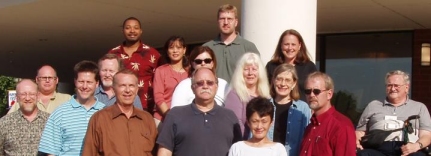
Caption: Photo of the FHWA Resource Center Environment Technical Service Team. From left to right: Back row - Brian Smith, Katiann Wong Murillo, Brian Yanchik, K. Lynn Berry. Middle row - Kevin Moody, Dave Gamble, Deborah Scherkoske, Stephanie Stoermer, Kimberly Majerus, David Sullivan. Front row - Rodney Vaughn, David Grachen, Don Cote, William Van Peeters, Mary Ann Rondinella, and Bob Carl.
The FHWA Resource Center (RC) was one of the sponsors of 2007’s International Conference on Environment and Transportation (ICOET) which was held in Little Rock Arkansas. The conference is valued by the team as an opportunity to interact with partners and customers face to face.
The entire Environment Team traveled from their respective locations from across the country to attend. The occasion was also used as a meeting time and a planning session for 2008 activities for the Environment Team. The team welcomed their newest new team member, Rodney Vaughn, who is based in Lakewood Colorado.
During the conference, Stephanie Stoermer along with a team from her former position with the California Division Office, Caltrans and EPA were presented with the National Environmental Streamlining
Excellence Award their collaboration which resulted in the Cumulative and Indirect Impacts Guidelines. The Guidance document, produced through the cross agency partnership, provides practical, flexible approaches for identifying cumulative impacts and growth-related, indirect impacts as well as for preparing solid and appropriate analyses.
The next ICOET meeting will take place in 2009.
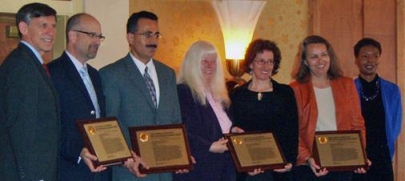
Caption: Photo of the recipients of the National Environmental Streamlining Excellence Award receive recognition. From left to right : Rick Capka; Mike Davis-Carter Burgess; Maiser Khaled-FHWA California Division; Stephanie Stoermer-FHWA Resource Center; Nancy Levin- EPA Region 9; Cindy Adams-Caltrans; Gloria Shepherd. Photo taken by Don Cote.
Thriving Bald Eagles to Remain Protected Under Federal Law
By Paul Garrett, FHWA Headquarters, HEPN & Mary Ann Rondinella, FHWA Resource Center

Caption: Photo of bald eagle chicks sitting in their nest. (U.S. Fish and Wildlife Service)
It’s a sight no nature lover can possibly forget: a bald eagle swooping gracefully through the air, or sitting in regal splendor in a tree, surveying its surroundings. For decades, it was a privilege few in the lower 48 were able to enjoy as bald eagle numbers plummeted through the 1960’s. Long subject to human caused mortality and habitat loss, Congress passed the Bald Eagle Protection Act in 1940, to protect bald eagles and their nests and eggs. But the introduction of the pesticide DDT and resulting “thin egg-shell disease” caused the number of nesting pairs to dwindle to less than 500. DDT concentrations in wildlife were magnified up the food chain and caused eagles to lay eggs with fragile shells, leading to reproductive failure.
In 1973, the bald eagle population outside of Alaska was listed under the Endangered Species Act. The threat to bald eagles and other species posed by DDT prompted the U.S. Environmental Protection Agency to ban DDT. Since the 1970’s, bald eagle numbers have rebounded. In 2007, the U.S. Fish and Wildlife Service (USFWS) estimates that there are now over 9,900 nesting pairs of bald eagles in the lower 48 states. Every state (except Hawaii, which has never had bald eagles) has at least one nesting pair.
On June 28, 2007, at a ceremony at the Jefferson Memorial, Secretary of Interior Dirk Kempthorne announced that the bald eagle has recovered and can be removed from the list of species protected under the Endangered Species Act. But the bald eagle will remain protected under the Bald and Golden Eagle Protection Act (BGEPA). This act prohibits unauthorized take of bald and golden eagles, including disturbing eagles. The act itself, however, does not define the term “disturb.” On June 5, 2007, the USFWS issued a final rule defining “disturb” to mean: “to agitate or bother a bald or golden eagle to a degree that causes, or is likely to cause, based on the best scientific information available, 1) injury to an eagle, 2) a decrease in its productivity, by substantially interfering with normal breeding, feeding, or sheltering behavior, or 3) nest abandonment, by substantially interfering with normal breeding, feeding, or sheltering behavior.”
The USFWS has also issued the National Bald Eagle Management Guidelines. The guidelines provide information to property owners and others to avoid disturbance of bald eagles. The guidelines identify different types of activities and recommends buffer zones and other measures to prevent disturbance.
Finally, the USFWS has proposed a permit program, to allow take of eagles that is incidental to otherwise lawful activities. The proposed permit program, described in a Federal Register notice published on June 5, 2007, would allow take of eagles, subject to certain conditions. The USFWS is seeking comments on the proposed permit program. The comment period ends on September 4, 2007.
For more information, and to view copies of the Federal Register notices and management guidelines, see the USFWS website at http://www.fws.gov/migratorybirds/baldeagle.htm
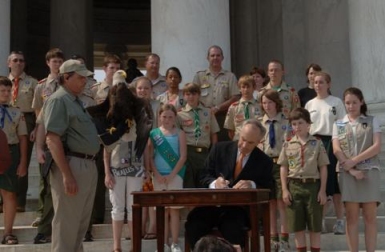
Caption: Secretary of Interior Dirk Kempthorne signs the decision to remove bald eagles from the list of threatened and endangered species on June 28, 2007. Photo courtesy of U.S. Fish and Wildlife Service.
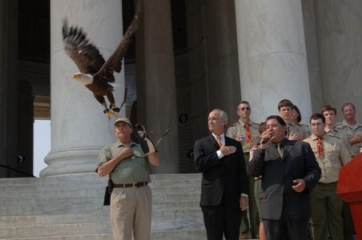
Caption: Phot of Secretary of Interior Kempthorne and ceremony participants look on as Challenger, a bald eagle used in educational programs, flies during the ceremony. Photo courtesy of U.S. Fish and Wildlife Service.
Sidebar:
In Memoriam: Martha, 1993-2006
Martha, the female half of a bald eagle pair that nested near the Woodrow Wilson Bridge construction site for many years, was humanely euthanized in October 2006. Martha had suffered a wing injury after flying into a structure.
In April 2006, Martha was severely injured by another female eagle that tried to encroach on her and mate George’s territory. She was rescued by bridge project personnel. She was nursed back to health by wildlife rehabilitators and reunited with George, much to the joy and relief of the Woodrow Wilson Bridge project team.
Martha and George were proud parents of 16 eaglets.
Widower George has been seen with the female eagle that attacked Martha. The female had remained in the bridge vicinity after the fracas, and has wormed her way into George’s affections. Although dismayed by George’s dalliance, the project team is hopeful that George will recover from his loss and again father young eaglets.
Rest in peace, Martha. And thank you for bringing so much joy and wonder into the hearts of so many.
- Mary Ann Rondinella
New Guidance Issued on Clean Water Act Jurisdiction over Waters of the United States
By Dennis Durbin and Paul Garrett, FHWA Headquarters, HEPN, & J. David Sullivan and Mary Ann Rondinella, FHWA Resource Center
The Clean Water Act (the Act) prohibits discharge of any pollutants, including dredged or fill material into waters of the United States, except in compliance with a permit issued pursuant to the Act. Exactly what waters are considered waters of the United States has been the subject of litigation. On June 5, 2007, the U.S. Environmental Protection Agency (EPA) and the U.S. Army Corps of Engineers (USACE) issued guidance on jurisdiction over waters of the United States under the Act. This guidance is based on the U.S. Supreme Court decision in the consolidated cases Rapanos v. United States and Carabell v. United States (referred to as “Rapanos”).
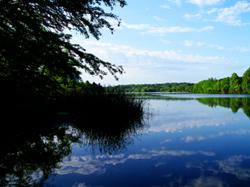
Caption: Photo of Town Lake, Austin, TX. Photo by Stephanie Stoermer, FHWA Resource Center.
There has been considerable uncertainty about jurisdictional determinations since the Rapanos decision. The justices did not issue a majority opinion. Instead, the justices issued one plurality opinion, two concurring opinions, and two dissenting opinions. The new guidance is based on the reasoning articulated by a majority of the justices.
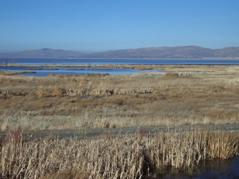
Caption: Washoe Lake wetlands mitigation site for US 395 project, near Carson City, NV. Photo by Kevin Moody, FHWA Resource Center.
The guidance identifies waters that are subject to CWA jurisdiction and waters that are generally not subject to jurisdiction. It also identifies waters that may be subject to jurisdiction, and for which a fact-based analysis will be required to establish whether or not an aquatic resource has a significant nexus to a navigable water. An insignificant or speculative nexus is insufficient to declare a water jurisdictional. Absent a significant nexus, jurisdiction is lacking.
The new guidance is effective immediately. The EPA and USACE are seeking comments on the early implementation of the guidance. Comments must be received on or before December 5, 2007. Within nine months of issuance of the guidance and after review of public comments, the EPA and USACE will decide whether to reissue, revise or suspend the guidance.
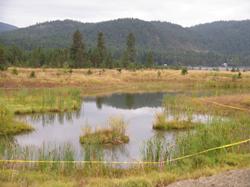
Caption: Wetland restoration site, northern Idaho. Photo by Stephanie Stoermer, FHWA Resource Center.
The guidance and additional explanatory materials are now available on the USACE Website at:
http://www.usace.army.mil/cw/cecwo/reg/cwa_guide/cwa_guide.htm.
Similar materials are available on the EPA website at:
http://www.epa.gov/owow/wetlands/guidance/CWAwaters.html
ANNOUNCEMENT:

Southern Transportation & Air Quality Summit 2007
August 28-30, 2007 in Savannah, GA
BEST PRACTICES, LATEST INFORMATION, REGULATIONS, TECHNOLOGIES
The Southern Transportation and Air Quality Summit 2007 is an event sponsored by the Federal Highway Administration and EPA Regions 3, 4, and 6. The purpose of the summit is to bring together stakeholders from both the transportation and air quality communities to discuss current and coming regulatory environment, technologies and current practices vital to the field of air quality and transportation. The summit is geared to practitioners involved with public agencies at all levels. A host of speakers from within the southern and eastern regions will present a number of key topics, best practices and latest information vital to transportation, planning, and air quality professionals.
CONFERENCE INFORMATION
INFORMATION & PRELIMINARY AGENDA:
https://www.fhwa.dot.gov/resourcecenter/staqs
REGISTRATION FEE: $95
Conference Registration:
http://www.metro4-sesarm.org/calendar/eventsid.asp?Event_ID=384
HOTEL INFORMATION
HOTEL: Please make hotel reservations at www.desotohilton.com or by calling (800) 426-8483. Hilton Savannah Desoto, 15 East Liberty Street, Savannah, Georgia 31401. A limited block of rooms is available now until Friday July 27, 2007 at $95/night.
CONTACTS:
Mike Roberts, FHWA, (404) 562-3928, Michael.Roberts@fhwa.dot.gov
Lynorae Benjamin, EPA Region 4, (404) 562-9040, Benjamin.Lynorae@epa.gov
Martin Kotsch, EPA Region 3, (215) 814-3335, kotsch.martin@epa.gov
Peggy Wade, EPA Region 6, (215) 665-7247, Wade.Peggy@epa.gov
IDEAS?
If you have any suggestions for agenda items or would like to
volunteer to present, please contact one of the above listed staff.

Caption: Logo of the Environmental Protection Agency
What’s Going On?
Here are a few of the upcoming events of interest to the environmental community:
July 2007
July 22 - 25
TRB ADC40 Noise & Vibration Summer Meeting
San Luis Obispo, CA
http://www.trb.org/conferences/2007_TRB_ADC40_PrelimAnnouncement.pdf
August 2007
August 26 – 28
TRB's Best Practices: Coordination of Transit, Regional Transportation Planning, and Land Use
Denver, CO
http://gulliver.trb.org/calendar/
August 28-30
Southern Transportation and Air Quality Summit
Savannah, Georgia
https://www.fhwa.dot.gov/resourcecenter/staqs.htm
September 2007
September 7 - 11
11th Conference on National Scenic and Historic Trails
Duluth, MN
http://www.nationaltrailspartnership.org/calendar.asp
September 10-11
Meeting of State DOT Bicycle and Pedestrian Coordinators and FHWA Division Staff with Bike/Ped Responsibilities
Davis, CA
Contact John Fegan, FHWA Office of Natural and Human Environment, john.fegan@dot.gov
September 27 - October 1
AASHTO's Annual Meeting
Milwaukee, WI
Contact Hannah Whitney at 202-624-8489 or HannahW@aashto.org
November 2007
November 4
End of Daylight Saving Time
January 2008
January 13 - 17
TRB 87th Annual Meeting - "Partnerships for Progress in Transportation"
Washington, DC
Contact: TRB's Linda Karson at LKarson@nas.edu
For additional conferences and events, see FHWA's Planning, Environment & Realty calendar at www.fhwa.dot.gov/hep/calendar.htm.
CONTACT INFORMATION:
Editor–in-Chief
Don Cote
Environment Technical Service Team (TST)
Team Manager
Phone: (720) 963-3210
don.cote@fhwa.dot.gov
TST Editorial Board Members:
David Grachen, Brian Smith, and David Sullivan
FHWA Resource Center
Aung Gye
Office of Project Development &
Environmental Review, FHWA HQ
Managing Editor:
Marie Roybal,
FHWA Resource Center
marie.roybal@fhwa.dot.gov
Due to Quarterly publication schedule, all article submissions for future issues are due to the Editor-In-Chief by the 15th of March, June, September, and/or December
*If you would like to receive this newsletter electronically, please send your email address to:
marie.roybal@fhwa.dot.gov